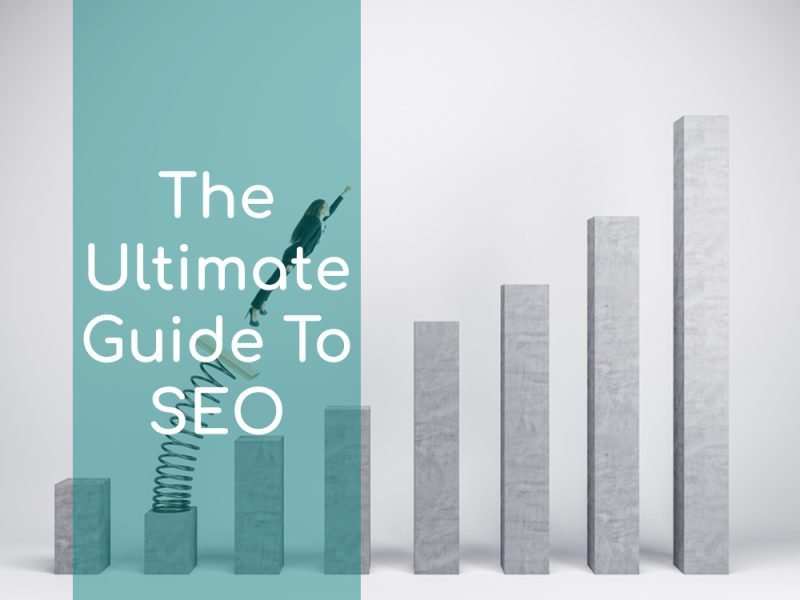In today’s digital world, having an online presence is crucial for any business or website owner. However, simply having a website is not enough to attract visitors and potential customers. Search Engine Optimization (SEO) is the process of optimizing your website to rank higher on search engines such as Google, Bing, and Yahoo. In this guide, we will cover everything you need to know about SEO and how it can help you improve your website’s search engine ranking.
What is SEO and why is it important?
SEO is the practice of optimizing your website to rank higher on search engines and to drive organic traffic to your site. The importance of SEO lies in the fact that search engines are the primary means of navigation for most internet users. By ranking higher on search engines, your website will be more easily discoverable and attract more traffic, which can lead to increased conversions and revenue.
According to a study by BrightEdge, “Organic search is responsible for 53% of website traffic, compared to paid search which only accounts for 14% of website traffic.” This shows the significance of SEO in driving organic traffic to a website and its impact on a business’s overall success.
Types of SEO
On-page SEO:
This involves optimizing individual web pages to rank higher and earn more relevant traffic in search engines. On-page SEO focuses on optimizing content and HTML source code, including headlines, meta descriptions, and image alt tags.
Off-page SEO:
This involves optimizing external elements to impact your site’s trust and authority, and thus improve its ranking in search engines. Off-page SEO includes activities such as link building, social media marketing, and influencer outreach.
Technical SEO:
This involves optimizing the technical aspects of a website to make it more accessible and easier for search engines to crawl and index. Technical SEO includes activities such as website speed optimization, mobile optimization, and crawlability improvements.
Local SEO:
This involves optimizing a website for customers in a specific geographic location, typically by targeting local keywords and building local citations and reviews.
E-commerce SEO:
This involves optimizing an e-commerce website to rank higher for product-related keywords and improve its visibility in search engines. E-commerce SEO includes activities such as product optimization, checkout optimization, and customer reviews management.
Content SEO:
This involves optimizing the quality, relevance, and uniqueness of a website’s content to improve its ranking in search engines and drive more organic traffic. Content SEO includes activities such as keyword research, content creation, and content promotion.
Voice SEO:
This involves optimizing a website for voice search queries, typically by creating content that answers common questions and optimizing for featured snippets.
Video SEO:
This involves optimizing video content to rank higher in search engines and drive more relevant traffic to a website. Video SEO includes activities such as video transcription, video tagging, and video sitemaps.
These are some of the main types of SEO, and the specific tactics used can vary depending on the goals and objectives of the website. However, all of these types of SEO have a common goal of improving a website’s visibility and ranking in search engines.
Keyword Research and Optimization:
Keyword research is the process of identifying the keywords and phrases your target audience uses to search for your products or services. Once you have identified these keywords, you can then optimize your website’s content to include them, which will help your site rank higher for those keywords on search engines.
One of the best ways to conduct keyword research is to use a keyword research tool such as Google Keyword Planner or Ahrefs. These tools allow you to see the search volume and competition level for specific keywords, which can help you determine the best keywords to target for your website.
On-page Optimization Techniques:
On-page optimization refers to the techniques used to optimize individual web pages in order to rank higher and earn more relevant traffic. This includes optimizing your website’s content, meta tags, header tags, and images to include your target keywords.
One of the most important on-page optimization techniques is to ensure that your website’s content is high-quality and relevant to your target audience. This will not only improve your search engine ranking but also provide a better user experience for your visitors.
Another important aspect of on-page optimization is to include meta tags such as the title tag and description tag. The title tag is the text that appears in the search engine results and should include your target keyword and a brief description of the page’s content. The description tag is a brief summary of the page’s content and should also include your target keyword.
Link Building Strategies:
Link building is the process of acquiring links from other websites to your own. These links help search engines determine the authority and relevance of your website, which can help improve your search engine ranking. There are various link building strategies that you can use, including guest blogging, broken link building, and partnering with other websites.
Guest blogging involves writing articles for other websites in exchange for a link back to your own site. This not only helps build your website’s authority and increase your search engine ranking but also allows you to reach a wider audience.
Broken link building involves finding broken links on other websites and offering to replace them with a link to your own site. This not only helps improve your search engine ranking but also helps the website owner improve their own site’s user experience.
Partnering with other websites involves finding websites in your niche that have a similar target audience and working together to promote each other’s sites.
Local SEO Best Practices:
Local SEO is a subset of SEO that focuses on optimizing a website to rank higher in local search results. This is especially important for businesses with physical locations, such as restaurants, retail stores, and service-based businesses.
One of the key components of local SEO is to ensure that your website and all other online listings, such as Google My Business and Yelp, are up-to-date and accurate. This includes your business name, address, and phone number (NAP), as well as business hours and other relevant information.
Another important aspect of local SEO is to obtain local citations, which are mentions of your business’s NAP on other websites. These citations help search engines understand the relevance and authority of your business in your local area.
Finally, it is important to optimize your website for local keywords, such as the name of your city or state. This can be done by including these keywords in your website’s content and meta tags.
Conclusion:
Search Engine Optimization (SEO) is an important aspect of any online marketing strategy. By following the tactics and strategies outlined in this guide, you can improve your website’s search engine ranking, attract more organic traffic, and ultimately drive more sales and revenue for your business.
Whether you are a marketing professional or a website owner, it is important to stay up-to-date with the latest SEO best practices and trends in order to remain competitive in today’s digital landscape. By investing in SEO, you can ensure that your website is easily discoverable by your target audience and effectively drive your business’s success.
FAQs
What is SEO and why is it important?
A: SEO stands for Search Engine Optimization, which is the process of optimizing a website to improve its ranking on search engines such as Google. It is important because higher search engine rankings result in more organic traffic to your website, which can lead to increased sales and revenue for your business.
What are the key tactics and strategies for improving a website’s search engine ranking?
A: Key tactics and strategies for improving a website’s search engine ranking include keyword research and optimization, on-page optimization techniques, link building strategies, and local SEO best practices.
What is keyword research and optimization?
A: Keyword research involves identifying the keywords and phrases that your target audience is searching for on search engines. Keyword optimization involves incorporating these keywords into your website’s content and meta tags to improve its ranking for those keywords.
What are on-page optimization techniques?
A: On-page optimization techniques refer to the changes and optimizations made directly on a website in order to improve its ranking on search engines. These may include optimizing page titles, meta descriptions, header tags, and website content for keywords.
What are link building strategies?
A: Link building strategies involve acquiring high-quality backlinks from other websites to your own. These backlinks act as a signal of credibility and authority to search engines, which can help improve your website’s ranking.
What are local SEO best practices?
A: Local SEO best practices involve optimizing a website to rank higher in local search results. This may include ensuring that your business’s NAP (name, address, and phone number) is up-to-date and accurate on all online listings, obtaining local citations, and optimizing your website for local keywords.





